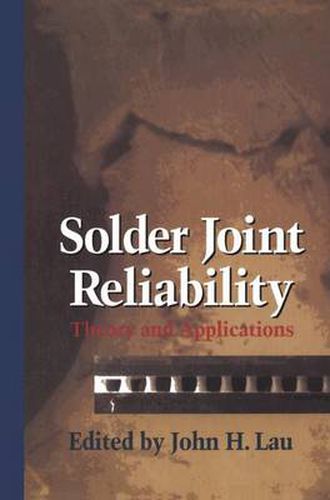Readings Newsletter
Become a Readings Member to make your shopping experience even easier.
Sign in or sign up for free!
You’re not far away from qualifying for FREE standard shipping within Australia
You’ve qualified for FREE standard shipping within Australia
The cart is loading…






This title is printed to order. This book may have been self-published. If so, we cannot guarantee the quality of the content. In the main most books will have gone through the editing process however some may not. We therefore suggest that you be aware of this before ordering this book. If in doubt check either the author or publisher’s details as we are unable to accept any returns unless they are faulty. Please contact us if you have any questions.
Solders have given the designer of modern consumer, commercial, and military electronic systems a remarkable flexibility to interconnect electronic components. The properties of solder have facilitated broad assembly choices that have fueled creative applications to advance technology. Solder is the electrical and me chanical glue of electronic assemblies. This pervasive dependency on solder has stimulated new interest in applica tions as well as a more concerted effort to better understand materials properties. We need not look far to see solder being used to interconnect ever finer geo metries. Assembly of micropassive discrete devices that are hardly visible to the unaided eye, of silicon chips directly to ceramic and plastic substrates, and of very fine peripheral leaded packages constitute a few of solder’s uses. There has been a marked increase in university research related to solder. New electronic packaging centers stimulate applications, and materials engineering and science departments have demonstrated a new vigor to improve both the materials and our understanding of them. Industrial research and development continues to stimulate new application, and refreshing new packaging ideas are emerging. New handbooks have been published to help both the neophyte and seasoned packaging engineer.
$9.00 standard shipping within Australia
FREE standard shipping within Australia for orders over $100.00
Express & International shipping calculated at checkout
This title is printed to order. This book may have been self-published. If so, we cannot guarantee the quality of the content. In the main most books will have gone through the editing process however some may not. We therefore suggest that you be aware of this before ordering this book. If in doubt check either the author or publisher’s details as we are unable to accept any returns unless they are faulty. Please contact us if you have any questions.
Solders have given the designer of modern consumer, commercial, and military electronic systems a remarkable flexibility to interconnect electronic components. The properties of solder have facilitated broad assembly choices that have fueled creative applications to advance technology. Solder is the electrical and me chanical glue of electronic assemblies. This pervasive dependency on solder has stimulated new interest in applica tions as well as a more concerted effort to better understand materials properties. We need not look far to see solder being used to interconnect ever finer geo metries. Assembly of micropassive discrete devices that are hardly visible to the unaided eye, of silicon chips directly to ceramic and plastic substrates, and of very fine peripheral leaded packages constitute a few of solder’s uses. There has been a marked increase in university research related to solder. New electronic packaging centers stimulate applications, and materials engineering and science departments have demonstrated a new vigor to improve both the materials and our understanding of them. Industrial research and development continues to stimulate new application, and refreshing new packaging ideas are emerging. New handbooks have been published to help both the neophyte and seasoned packaging engineer.